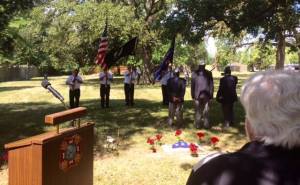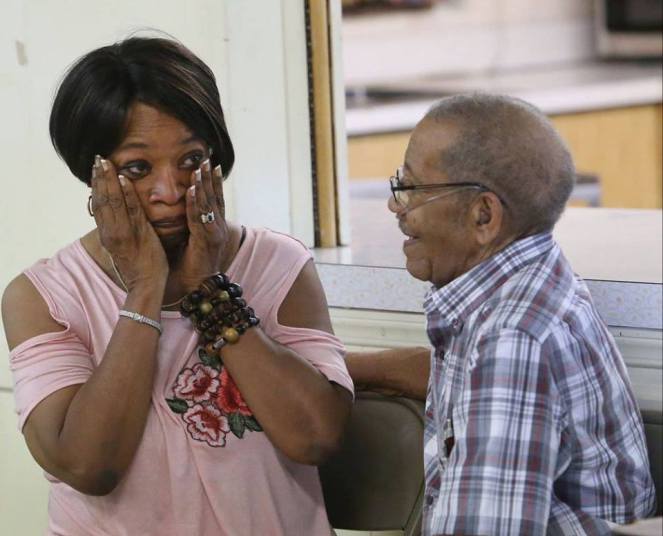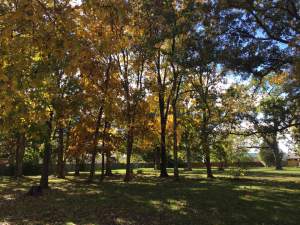Near the center of the largest city of St. Charles County sits a quiet little plot of ground that transports a visitor to an earlier time when many of its residents were enslaved people. Samuel Keithly brought his family and property to what is today’s City of O’Fallon, in the early

1800s at the same time that the friends and followers of American pioneers like Daniel Boone, Jacob Zumwalt and Francis Howell were settling the area. Keithly was one of the largest slave owners in St. Charles County according to the U.S. Slave Schedules of 1850 and 1860. Among those slaves were John Rafferty and his sisters Ludy, Elsie and Lizzie according to oral history.
In 1855, a German born attorney named Arnold Krekel, purchased 320 acres of land on  which he platted a town named O’Fallon, naming it after the railroad magnate John O’Fallon in hopes that it would become a stop on the westward push of progress. He set up his younger brother Nicholas as the Station Agent and Postmaster, giving him credit as the town’s founder. This created the unlikely neighbors of the Keithlys and the Krekels, with yet one common denominator. Both Samuel Keithly and Arnold Krekel owned slaves in 1860. Yet there their stories parted. Arnold Krekel, President of Missouri’s Constitutional Convention would go on to sign its’ Emancipation proclamation ending slavery in the State on January 11, 1865.
which he platted a town named O’Fallon, naming it after the railroad magnate John O’Fallon in hopes that it would become a stop on the westward push of progress. He set up his younger brother Nicholas as the Station Agent and Postmaster, giving him credit as the town’s founder. This created the unlikely neighbors of the Keithlys and the Krekels, with yet one common denominator. Both Samuel Keithly and Arnold Krekel owned slaves in 1860. Yet there their stories parted. Arnold Krekel, President of Missouri’s Constitutional Convention would go on to sign its’ Emancipation proclamation ending slavery in the State on January 11, 1865.
Samuel Keithly didn’t free any of his slaves. Oral tradition states that he gave the land that we call Sage Chapel Cemetery to his slaves, where they worshiped in a field of Sage. We do know that in 1881, his daughter Mahala and her husband Jasper Castlio legally transferred property that included a small church building of the African Methodist Episcopal Church on today’s Sonderen Avenue and the cemetery which lay at its southern

terminus to three A.M.E. Trustees. At the same time there was a traveling minister with the A.ME. Church Conference named Jefferson Franklin Sage that preached along the route of today’s Interstate 70 between the city of St. Charles and further west in Jonesburg. He would preach there for many years before moving on to Kansas in the late 1890s. And by that time, there were two other black churches along today’s Sonderen Street, where a large African-American community lived.
Wishwell Baptist Church was begun in 1891 and was a plant of Hopewell Baptist Church that had begun in the 1850s south of Wentzville on the Boone’s Lick Road. Wishwell was near the creek, on the east side of Sonderen, close to Sage Chapel Church. The other African-American Church was Craven’s Methodist, begun in 1871, near the corner of Elm and Sonderen. Next to Craven’s, on the corner, was the town’s African-American school, and across the street was the “Colored Odd Fellow’s” lodge that met in Willis Thornhill’s house until Henry Obrecht purchased the property in 1910. All of these lay on today’s Sonderen Avenue, which ran north to south from the Wabash Railroad to Sage Chapel Cemetery near the former Keithly plantation. This was also the dividing line between the property of the Krekel Addition and the former Keithly’s until 1951 and the City’s annexation of property. This was the line for segregation.
Even though all three of these African-American Churches are no longer standing, and the buildings that once housed the black school and the Odd-Fellows lodge are largely

remodeled, Sage Chapel Cemetery still exists. Significant in today’s world where such places are so often lost and forgotten. A peaceful and quiet testament to a difficult time and such families as Hayden, White, Edwards, Thomas, Rafferty and Ball. While many of the community of African Americans left O’Fallon in the late 1950s and early 1960s in search of better job opportunities for their families, some remained. And while many of Sage Chapel’s residents died living in St. Charles, St. Louis or even as far as New Orleans, they were brought home to Sage Chapel when they passed. Eventually all three churches would use Sage Chapel to bury their families.
Today the City of O’Fallon sees that the grass is cut, trees cut and that Sage Chapel is well maintained. The City truly understands that this place has a collective memory that is an integral part of its’ City’s rich history. Its’ Historic Preservation Commission shares in this mission and is working to see that Sage Chapel is preserved for future generations.

Members of the community are working to see it placed on the National Register of Historic places. One of the largest cities in Missouri, O’Fallon is setting an example of how to honor its history, even the more difficult stories. This in turn leads to a greater understanding and a richer dialogue for everyone. Thank you O’Fallon, Missouri, a great place to live!
Today research tells us that Sage Chapel Cemetery has 38 marked burials, yet is estimated to have an 115 grave sites on this small one acre which lies next to O’Fallon’s Veterans of Foreign Wars Post 5077 at 8500 Veterans Memorial Parkway in O’Fallon, Missouri. It is estimated that nearly twenty percent of its burials were former slaves. To watch a video by O’Fallon’s Communications about Sage Chapel Cemetery CLICK HERE.






You must be logged in to post a comment.